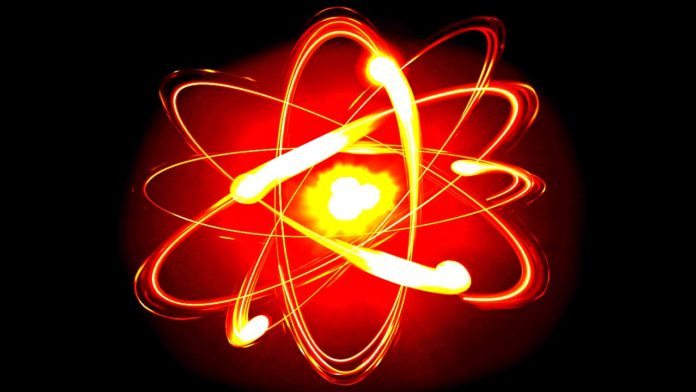From the looks of it, it’s not just humans who are hungry for power. In the age of the Internet of Things (IoT), everything needs power, or unlimited power to be exact. Whether it’s a small hand-held device or something as big as a space station; the incessant need for power is forcing the sharpest minds in the world to think out of the proverbial box. But, how do we tap into unlimited clean energy?
Sources of Power
Mankind has already experimented with a lot of unique ways to generate power. Every iteration of experimentation ushers in new findings and opens previously unimaginable doors to harness energy from fossils, water, the sun and even nuclear fusion. However, with each attempt we discovered the shortcomings with various power-generation methodologies and realized we don’t just need energy; we need clean energy.
Using the earth’s fossil fuels was fine until we realized we will exhaust them at some point. Plus, during the process, we discovered some drastic side effects of this process that include global warming and many other environmental issues. So, we had to abandon our hopes with Biomass energy production — a process of generating power by burning or utilizing fossil fuels.
So, we started looking up to hydro-power, geothermal and solar power generation, as they are cleaner and more practiced methods of power production. However, it doesn’t mean that they don’t present their own challenges. The Three Gorges, a Chinese hydro-power dam and also the world’s largest dam, is capable of producing 22,500 Megawatts (MW) of energy. The costs include, but are not limited to, the relocation of a record number of people (1.2 million) and the flooding of 13 cities, 140 towns and 1,350 villages.
Similarly, geothermal and solar power generation are being employed around the globe but they too present their own set of challenges.
Nuclear Fusion and Nuclear Fission
Nuclear fusion and fission are two processes responsible for continuously causing gigantic explosions on the surface of the Sun. They are the reasons why the Sun is so hot and radiates energy powerful enough to travel a distance of 149.6 million kms and reach our planet.
Nuclear fusion, as the term implies, is a process which combines two or more nuclei or sub-atomic particles. This combination results in the formation of new atoms and also releases incredible amounts of energy in the process.
The process of nuclear fusion requires really high temperatures (around 150 million degree centigrade). At these temperatures, matter changes its state to plasma. For the generation of power using fusion, plasma is needed to hold its current state for a long time. The amount of plasma governs the total power produced. So, fusion reactors were struggling because of the amount of plasma they could hold.
Nuclear fission involves the breakdown of an atom into smaller parts (i-e nuclei). This breakdown can either be the result of an external force or can also happen naturally because of radioactive decay.
Nuclear fission is fine; it produces a lot of energy but it’s not as good as nuclear fusion. Nuclear fusion is the process that actually powers the Sun and exists at the very center of it. Keeping in mind that the center is where the temperature of the Sun is the highest, it wouldn’t be wrong to assume that nuclear fusion can provide infinite amounts of clean energy.
Breakthroughs in Nuclear Fusion: Possibilities of Unlimited and Clean Energy
The path to unlimited clean energy has always been a long and difficult one and given the advancements in research and technology, we can say that we even haven’t begun. Initially, our ideas and desires were limited only what was fantasized in science fiction movies. Like how they made a little Sun in the Spiderman movie. In theory, it all sounded as a good enough idea but making it happen was a different story altogether.
Lockheed Martin’s Fusion Reactor
In 2014, Lockheed Martin suggested the theory of a nuclear reactor that would be small enough to fit in the back of a truck and would weigh about 20 tons. Achieving that would have been a huge breakthrough but sadly, it was recently revealed that the new design for the same reactor is a 100 times larger and weighs 2,000 tons.
Lockheed’s promising reactor found a way to address and overcome the problem of the amount of plasma nuclear reactors can hold. They introduced a customized magnetic field generated using a compact fusion reactor (CFR). So, due to the heat generated when the plasma attempts to expand, the magnetic field will hold it back. It was a very smart solution for a complex issue; however, the designs just weren’t compact enough, meaning the human race was back to square one. It cannot be denied though that they are on the right track and do hold promise. Perhaps, their module needs a little more refining.
First Plasma
Tokmak Energy — a UK-based company recently announced that it had created a fusion reactor and called it ST40. Using ST40, Tokmak Energy manufactured the first ever plasma in human history on May 1, 2017. Currently, Tokmak energy is attempting to increase the ability of their reactor to generate even higher temperatures. For a successful nuclear fusion reactor, they would need to generate temperatures up to 27 million degree Fahrenheit or 15 million degrees Celsius. Their aim is to achieve about 180 million Fahrenheit or 100 million degrees Celsius. It is at these temperatures that a self-sustaining nuclear fusion reaction will occur.
The self-sustaining nuclear fusion reaction will ultimately realize mankind’s dream of an unlimited and clean power source.
The CEO of Tokmak Energy David Kingham was quoted as saying: “We will still need significant investment, many academic and industrial collaborations, dedicated and creative engineers and scientists, and an excellent supply chain. We are already half-way to the goal of fusion energy; with hard work we will deliver fusion power at commercial scale by 2030”.
So we are not close yet but we aren’t as far behind as we originally thought. We have to acknowledge the great breakthrough that Tokmak energy has achieved for mankind and we can finally be optimistic about a future with a clean and infinite source of energy.


















